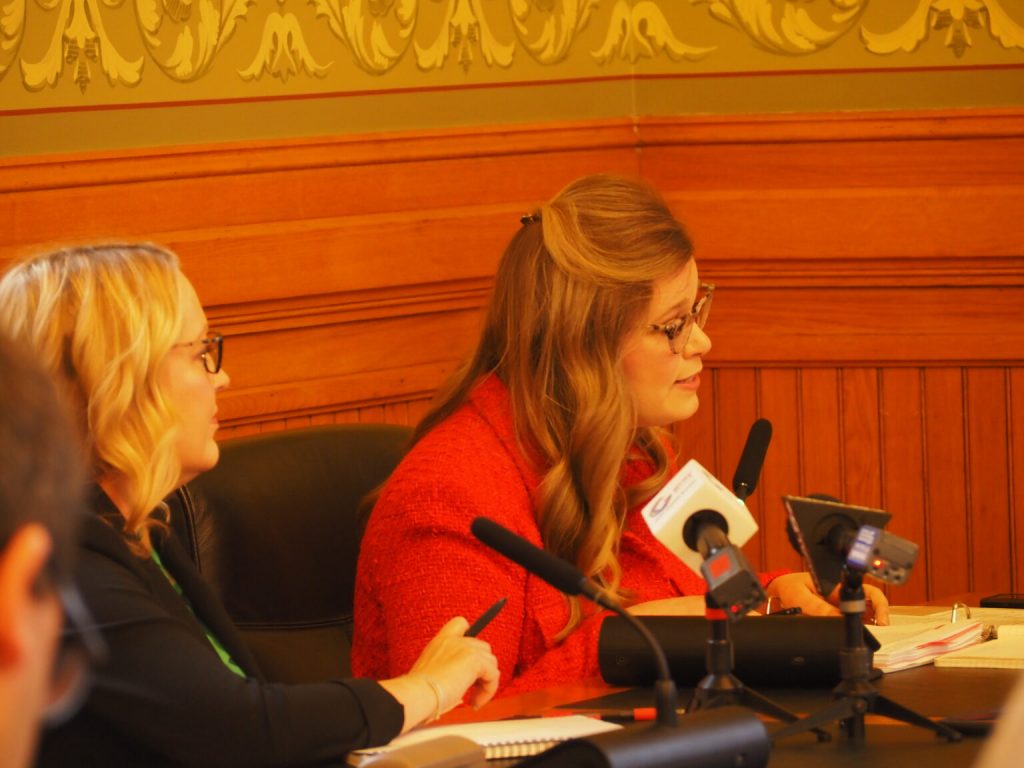Leaders of state’s new Division of Special Education announced as AEA law rolls out
August 3rd, 2024 by Ric Hanson
(Des Moines, Iowa)- In the upcoming school year, six new leaders will oversee Iowa’s Area Education Agencies as a part of the Iowa Department of Education’s division of special education following the implementation of a 2024 law making major changes to the state’s special education system. According to the Iowa Capital Dispatch, previously, Iowa’s AEAs, the regional agencies providing special education and other assistance for Iowa school districts, had internal staff with of accountability and oversight duties. But the 2024 law making funding changes to the AEA system, alongside increasing minimum teacher salaries and para-educator pay, moved these responsibilities to the state Department of Education under the reestablished division of special education.
Education Department Director McKenzie Snow said in a report to the Iowa Board of Education Thursday that Dr. Barbara Guy was selected to serve as the division administrator of state accountability and student supports, at the lead of the centrally located team, while Dr. Angelisa Fynaardt will serve as acting division administrator of regional continuous improvement and compliance working with regional-based teams through the nine AEA regions.

Iowa Department of Education Director McKenzie Snow answered questions from Senate panel considering her appointment to continue serving in the position on March 26, 2024 at the Iowa State Capitol. (Photo by Robin Opsahl/Iowa Capital Dispatch)
Amy Thoms-Starr, Ivan Gentry, Lisa Glenn, Molly Elston and Seth Piro have also been selected to serve in senior leadership roles as regional special education directors, according to the department news release.
Most of the division staff have prior experience at AEAs. Fynaardt has 13 years of experience as special education director at Great Prairie AEA. Several of the regional directors also previously held leadership positions at the regions where they will be working, including Thoms-Starr at Central River, Gentry at Green Hills and Molly Elston at Prairie Lakes.
“Collectively, these experts represent over 150 of years of expertise in special education across Iowa and represent parents, families, advocates, peer educators, special education teachers, principals, school districts, special education directors, AEA, special education directors and more,” Snow said at the meeting.
Snow said the division will be tasked with implementing accreditation and accountability measures including providing finance and data analysis, providing student evaluation and placement, helping develop curriculum and instruction and resolving complaints. The department plans to hire three more Regional Special Education Directors, in addition to other leadership staff, according to the release.
The law, signed by Gov. Kim Reynolds in March, was one of the most controversial pieces of legislation to move in the 2024 session. In Reynolds’ original proposal, the division was much larger, with planned staffing of 139 state employees funded by funded by $20 million moved from AEAs.
In addition to giving more oversight power to the state education department, the law also created a new funding formula for AEAs and school districts that will go into implementation over two years. In the second year of implementation, 90% of school district’s special education funding will go to AEAs while 10% of those funds will stay in school districts for discretionary use. Additionally, all general education and media services funding currently going to AEAs will go to school districts on the second year of implementation.
Reynolds said the changes were needed to ensure the best outcomes for Iowa students with special needs, and that the Department of Education oversight was crucial. A report released by the Guidehouse consulting firm found that Iowa spent more on special education per-pupil than the national average, but that Iowa special education students scored lower than the national average on National Assessment of Educational Progress tests. Critics of the plan panned the report, saying it was misleading.
“This legislation intends to resolve these issues,” Reynolds said at the bill signing. “It shifts funding to school districts, empowering them with local control to decide how best to serve their students and improve education outcomes without disrupting services or dismantling the system.”





